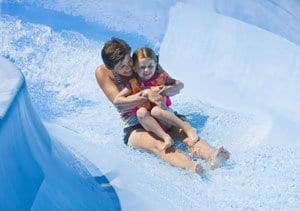At the pool, the lake or at home — make water safety a priority
Melissa Hjelle, Injury Prevention Specialist
CentraCare Health
 For many children, the last day of school is near and the city pools are just about to open. Your kids might be ready for fun in the water. But are you ready?
For many children, the last day of school is near and the city pools are just about to open. Your kids might be ready for fun in the water. But are you ready?
Unfortunately, drowning is one of the leading causes of injury-related death among children. Water is particularly dangerous for children between the ages of 1 and 4. Young children are naturally curious to everything around them. They lack the size and strength to remove themselves from danger in the water.
Drownings also can occur very quickly and often without a sound. Drowning is known as the “silent killer.” Victims may not have enough time or energy to shout for help or splash around as we would tend to believe.
So wherever you are this summer, here are few vital rules for keeping young kids safe around water.
- Kids should never be unattended around water. If for any reason you have to leave, don’t leave them in the water. Even if it’s just for a moment.
- Kids require your complete attention when around water of any kind. So resist the urge and put your cell phone away!
- Barriers save lives. Most young children drown in swimming pools. Placing a fence around your pool can help keep little ones from getting into danger when unsupervised. If you have an in-ground pool, surround it with an adult-sized fence with a gate that locks when it closes. If you have an above-ground pool, surround a fence around its top and make sure the ladder is either removed or locked when an adult is not present.
- If you set up an inflatable or portable pool at home, be sure to empty or put the pool away when it’s not in use. If your pool is in a place where your kids or neighborhood kids could get into it, don’t leave it out.
- If you are out on a boat, make sure kids are wearing an age-appropriate U.S. Coast Guard approved life jacket. Minnesota law requires a child less than 10 years old to wear a lifejacket when aboard a watercraft.
- Work to keep your kids safe around water inside the house, too. After all, kids can drown in water that is only inches deep. So after bath time, be sure to drain the tub immediately. Install toilet lids and seat locks to keep kids from being able to access the toilet. And keep doors to bathrooms and laundry rooms closed and, if necessary, secure them with door knob covers or lever handle locks.
- Get educated! Teach children that water can be dangerous and they should never go near it without an adult. Sign your kids up for swimming lessons. And sign yourself up to learn CPR. The first few minutes after a drowning are vital. So knowing what to do before the paramedics arrive could be difference in saving a child’s — or anyone’s — life.